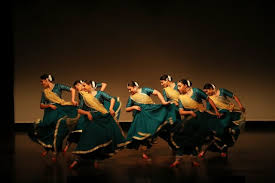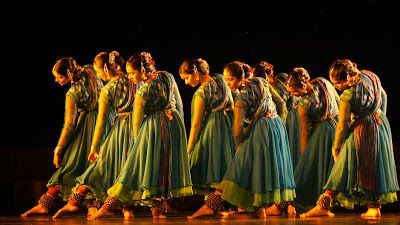Kathak Classical Dance: The Soulful Expression of Indian Tradition
When discussing Indian classical dance and music, one of the most graceful and expressive forms that come to mind is Kathak, a classical dance. This lovely art has made the people marvel over the decades through its wicked wonders of footwork; besides this, this kind of dancing has an interesting narration that goes along with this type of dance. The onlookers find the daring turns to be highly fascinating as well. By now, you should know whether you are a dancing fan, culture explorer, or someone curious about the origins of traditional dances in India. On the way to Indian art, Kathak has something engaging and captivating to offer.
This beautiful art form has dazzled people across the centuries with its fabulous footwork, and it also features a captivating narration that complements this form of dance. The crowd finds the rhythmic twirls appealing as well.
What is Kathak Classical Dance?
Known as one of the eight traditional Indian dance styles, Kathak is a well-liked Indian classical dance and music technique. The Sanskrit terms “katha” (tale) and “kathakar” (storyteller) are the origin of the term “Kathak,” which translates to “the art of storytelling through dance.” Originally performed by nomadic bards in India’s temples and courts, Kathak evolved into both a spiritual offering and a rich, sophisticated stage performance.
The Origins and Evolution of Kathak
The roots of Kathak classical dance go back to ancient times when wandering bards, known as Kathakars, would narrate mythological tales through dance and music. This form of art passed through over centuries, and it especially took up cultural aspects of both the Hindu and the Mughal.
Kathak blossomed in royal palaces during the Mughal era, incorporating Persian and Central Asian influences into a more elaborate and expressive style.It was here that Kathak began to showcase its most prominent dance moves, rhythmic footsteps, and intricate costumes.
Celebrating the Legacy of Birju Maharaj
No exploration of Kathak would be complete without paying homage to the legendary maestro, Birju Maharaj. Being considered a catalyst of Kathak tradition, his dancing skills have caused the dance form to reach new heights, which now makes him acclaimed and adorned all over the world. His awesome choreography, flawless footwork, and incomparable presence have a profound impact on Kathak, making him a legend in the classics of Indian dance and one of the most notable manifestations of Indian dance and music.
Elements of Kathak Classical Dance
To truly appreciate Kathak classical dance, it’s essential to understand its key elements:
1. Footwork (Tatkar)
The strong, rhythmic footwork of Kathak, accompanied by ankle bells (ghungroos), is its defining characteristic. The dancer makes rhythm patterns in balance and perfect timing.
2. Spins (Chakkars)
Kathak’s hallmark skills are quick and fluid spins. Amazing balance and coordination are required in these spinning motions.
3. Expressions (Abhinaya)
Using hand gestures and facial expressions, the dancer conveys emotion and narrative. Stories from Hindu epics like the Ramayana and the Mahabharata are frequently portrayed in these emotional passages.
4. Kathak Choreography
Kathak choreography ranges from traditional solo recitals to complex group performances. The current generation of choreographers, too, is experimenting more with fusion works where Kathak is mixed with ballet, jazz, or modern dance, and a new dimension is added concerning the classical underpinnings.
Kathak in Modern Times: Global Reach and Innovation
Today, Kathak classical dance has found admirers far beyond Indian borders. It is done on global stages, at the most famous universities, and is even being welcomed in international cultural celebrations.
Institutes like Aritri Dance Academy play a vital role in this global outreach. Classical techniques provide a strong foundation for students. This foundation allows them to explore Kathak choreography while staying grounded in tradition.

Why Learn Kathak?
- Enhances body-mind coordination
- Builds confidence and stage presence
- Deepens understanding of Indian cultural dance
- Serves as a form of self-expression and meditation.
Indian Classical Dance and Music: A Timeless Union
Kathak has a strong connection to classical music and is not simply about movement. Dancers often perform to Indian classical music, especially Hindustani compositions that complement Kathak’s rhythm-heavy nature.
Live music, especially tabla and harmonium, elevates the performance, turning it into a spiritual experience. An all-encompassing art form that is visually and aurally appealing is created when Indian traditional dance and music are combined.
Aritri Dance Academy: Nurturing the Future of Kathak
We grow talent at Aritri Dance Academy by providing:
- Expert training in all styles of Kathak, including the signature Birju Maharaj Kathak style.
- Comprehensive understanding of theory and practice: learn not just steps, but the stories, ragas, and rhythms.
- The possibility of staging contests.
- Indian traditional dance is fused with modern subjects in classes at the artistic lab.
You’re looking for a vibrant, immersive, and authentic way to experience Indian cultural dance. Aritri Dance Academy offers Kathak classical dance.
The Role of Kathak in Preserving Indian Heritage
Accordingly, in a world moving rapidly toward digitalization and instant gratification, Kathak classical dance stands as a reminder of India’s rich and diverse cultural legacy. Self-control, patience, and the delight of storytelling are among the qualities that Kathak’s intricate rhythm and range of emotions continue to instill.
By learning or even just watching Kathak, one connects to centuries of Indian cultural dance, understanding not only movement but also philosophy, mythology, and human emotion.
Start Your Kathak Journey with Aritri Dance Academy
You’re looking for a vibrant, immersive, and authentic way to experience Indian cultural dance. Kathak classical dance at Aritri Dance Academy awaits you. Come and share a story of tradition, including artistic storytelling, and be a part of a living history.
Allow your hands to work their magic, your feet to tell tales, and your spirit to move to the beats of the ages. India’s cultural legacy is truly pulsated by Kathak classical dance.
For more details, visit our website. We are also available on social media platforms – Facebook | YouTube | Instagram | Twitter | LinkedIn | Pinterest.


